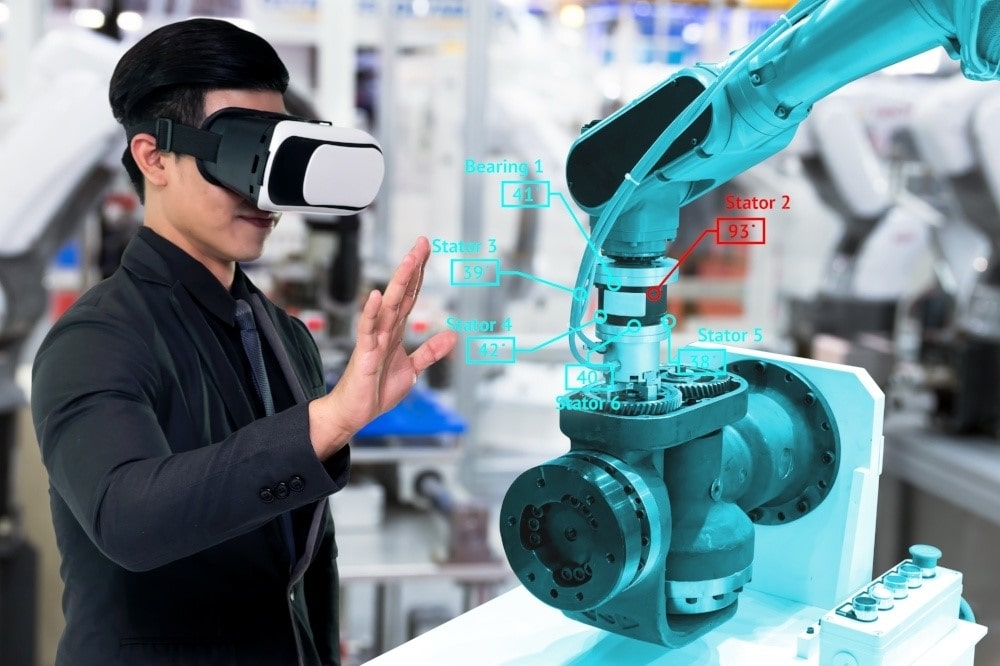Why AR and VR
Today, AR and VR are widely used across a spectrum of industries. They are so popular that they have gone beyond the traditional barriers of games and entertainment. They are deployed in virtually every sector. Be it for education, retail or ecommerce, its usage is increasing.
Its application is considerably increasing even in specialised areas like VR Engineering or VR Healthcare. Students and practitioners are all using XR technologies to learn better and perform better.
VR in Petroleum Engineering
VR is a 3D simulated technology that finds myriad applications in the oil and gas sector. Companies are increasingly leveraging AR and VR in the petroleum sector. In fact, it’s slowly becoming a part of core business strategies.
VR applications in the oil and gas industry are overarching. Its usage in maintenance and inspections has a high success rate. In fact, due to the highly cyclical and volatile nature of the petroleum industry, it can benefit tremendously from AR and VR.
Proper training and safety considerations are paramount. However, when it comes to the petroleum industry, even routine operations are quite complex and time-consuming.
Apparently, the oil and gas industry faces a host load of risks and challenges concerning safety, politics, regulations, fluctuating markets and physically challenging environments
With the changing times and ever- changing demands of various industries, the integration of VR becomes even more important to ease down complex processes and fulfil the demand of experienced personnel and leverage expertise.
- The Global demand for employment opportunities in petroleum engineering is expected to grow by 15% by 2026.
This implies a thorough training of the workforce to make them competitive in the workplace. VR can train workers effectively in virtual simulated 3D environments. Moreover, VR simulation can make the working environment safer and produce more efficient workflows.
How VR Helps Solve the Petroleum Engineering challenges
Operational Safety
Safety in high-risk jobs is of paramount concern for any organisation.Interaction with heavy equipment and inflammable, explosive and sometimes poisonous material make this industry extremely complex. Trainees and professionals need to be well prepared and operate equipment with utmost safety. While it is impossible to provide a hands-on training experience to all to-be professionals, click here VR makes this task seem possible with simulations and an immersive learning environment. This also promotes better retention leading to faster learning.
With VR, workers have a safer working environment. Moreover, they have the advantage of working in real life situations and hence develop better skills.
Surface and Terrain Analysis
Drilling efficiency in the oil and gas sector can save precious resources for companies. Engineers need to demarcate the drilling areas taking several factors like topography into consideration.
VR can play an important role in offering 3D subsurface views. With the help of VR the team of geologists and engineers can identify and minimise dry hole drilling expenditures.
Remote Location Challenges
Most of the oil and gas fields are in remote places or offshore. Moreover, resources are scarce in these places. It’s quite a challenge to learn or operate in such hostile conditions. Hence, it’s quite difficult to achieve optimal productivity. The company spends considerable time, material and human resources by assigning experienced hands to these locations to train the new joiners’. This takes away their focus.
Now, VR can be a very effective technology in this situation. In this situation VR with its offerings to learn from anywhere and at any time helps a lot.
Maintenance and Inspection
VR has the capability to offer data-driven simulation. Additionally, with real-time feedback, engineers can carry out inspections and maintenance even from remote locations. Consequently, this decreases downtime and enhances productivity.
Cyclical Industry
The petroleum industry is highly volatile and cyclical. Moreover, it faces man power shortage. Training and development of new trainees is a huge problem faced by the sector. VR Training can offset some of the issues faced by the companies. Moreover, it also aids with on the job training which is helpful not only for the new entrants but also the seasoned employees.
This makes it easier to offset some of the cyclical trends that the sector experiences.
Equipment Handling
Obviously, handling complex machinery and equipment is a part of the work responsibilities. However, it can be challenging at times. With VR, engineers can get unlimited exposure and training. They can practice to their heart’s content and have a good control over the workings. Moreover, its safe and poses zero risks. VR tools enhance collaboration at the rig sites.
Growth of the Global VR market
- In 2020, the global engineering services market stood at $830.48 billion
- Apparently, if all goes well as per the estimates, it will touch $1167.21 billion.
- It will grow at a CAGR of 5.6% from 2020-to 2025
- On the other hand, the AR and VR education market will grow at a CAGR of 6.2% to touch $19.6 billion by 2023. It was valued at $9.3 billion in 2018.
- Likewise, the simulation and virtual training market is on the growth path. As per estimates, it will grow to $ 601.85 Billion in 2027 from $204.41 Billion in 2019.
Apparently, the use of VR tech in training and higher educational institutes is a key factor driving this growth. VR promotes a safer and better training culture and subsequently increases productivity.
Conclusion
To conclude, AR and VR have opened up new doorways. They can cater to almost any discipline today. The applications of VR engineering will only rise in the future.
Undoubtedly, VR enhances conceptual understanding. A large part of the engineering discipline involves assembling and dissembling the various parts of machinery. Hence, VR offers a virtual environment where the trainee may practice unlimited times. As a result, this reduces on field errors and minimises downtime and costs. Moreover, VR training is customisable and scalable, which can be easily adapted to the type of machinery in use.
The growth of VR in engineering is rapidly increasing. Furthermore, the application of VR Engineering is better, more precise and allows for better work and learning outcomes.



